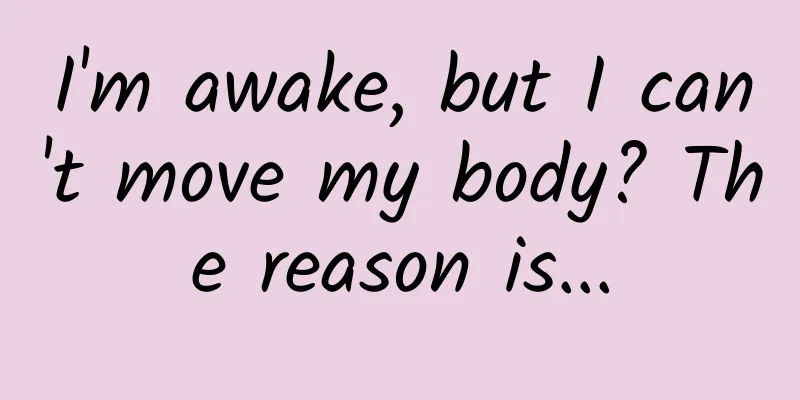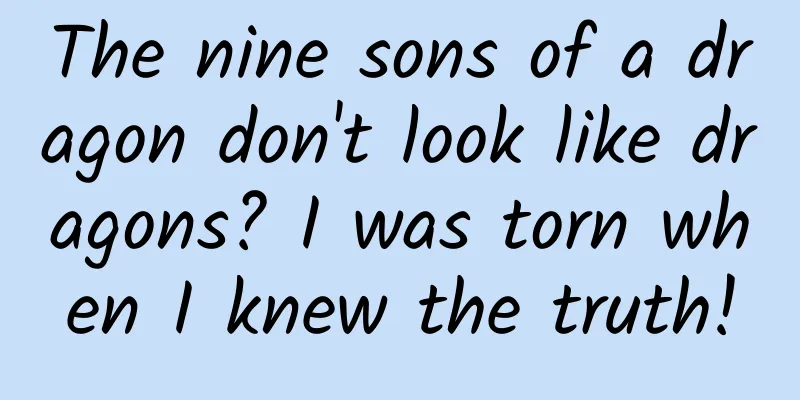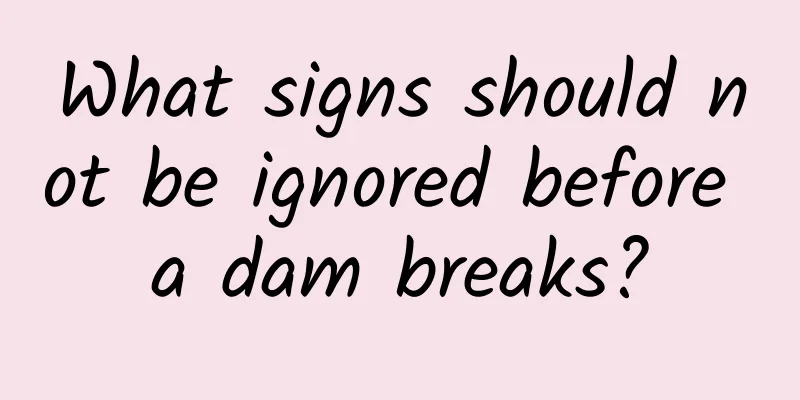I'm awake, but I can't move my body? The reason is...

|
© Wellcome Collection Leviathan Press: Sleep paralysis, also known as sleep paralysis, is a common sleep disorder. When the body quickly enters the rapid eye movement period, while the brain is still awake, or the sleep cycle is disordered, sleep paralysis may occur. Some people are more prone to tension, anxiety, high life pressure, and insufficient sleep, and are more likely to suffer from sleep paralysis. There is no mysterious supernatural power to dominate this. The first time this happened to me, I was a teenager. It was early in the morning, a few hours before I had to get up for school. I woke up and tried to turn over in my bed, but my body wouldn't listen to me - I couldn't move, and I was paralyzed from head to toe. Although my brain was awake, my muscles were still asleep. The bedroom felt hot and cramped, the walls seemed to close in on me, and I felt panic. Finally, after about 15 seconds, the paralysis wore off. I eventually found a name for my condition: sleep paralysis . It's a surprisingly common nocturnal condition in which part of your brain wakes up while your body remains temporarily paralyzed. In my case, after that initial terrifying episode, it became a regular occurrence, occurring every two or three nights. The more it happened, the less scary it became. Eventually, it became just an inconvenience. But sleep paralysis can also be very life-threatening. For some people, its onset is accompanied by terrifying hallucinations. One 24-year-old sufferer I spoke to, Victoria (who would only give her first name), remembers experiencing it one night when she was 18. “I woke up and couldn’t move,” she said. “I saw a goblin-like thing hiding behind my curtains. It jumped on my chest. I thought I had entered another dimension. The scariest thing was that I couldn’t scream. It was so vivid and real.” Others have reported seeing demons, ghosts, aliens, menacing intruders, or even deceased relatives. They have seen parts of themselves floating in the air or clones of themselves standing beside their beds. Some have seen angels, and later believed they had undergone a religious experience. Researchers believe these hallucinations may have fueled early modern European beliefs in witches and may even explain some modern claims of alien abduction.[1][2] © GoodRx Scientists think sleep paralysis may have been around since humans first fell asleep, and there have been several vivid descriptions of the attacks in literature, including a scene in Frankenstein that Mary Shelley apparently wrote after being inspired by a painting depicting sleep paralysis. But research into the phenomenon has been limited until recently. “It’s been largely ignored … but there’s been a lot more interest in it over the last 10 years,” says Baland Jalal, a sleep researcher at Harvard University who completed a 2020 study[3] that may be the first clinical trial of different treatments for sleep paralysis. Sleep paralysis has been cited as the inspiration for many novels and works of art, including John Henry Fusseli's painting Nightmare. © Getty Images Jalal is one of a handful of scientists who have devoted significant time and energy to studying the condition, hoping to gain a more definitive and robust description of its causes and effects, and to find out what it says about broader mysteries of the human brain. Until recently, there was no consensus on how many people suffer from sleep paralysis. Studies were sporadic and scattered, with little consistency in methodologies. But in 2011, Brian Sharpless, a clinical psychologist then at Pennsylvania State University and now a visiting associate professor at Saint Mary’s College in Maryland, conducted the most comprehensive review of the condition’s prevalence to date.[4] The review looked at data from 35 studies spanning 50 years, involving more than 36,000 volunteers. Sharpless found that sleep paralysis is more common than previously thought, with almost 8% of adults reporting experiencing it. The figures were much higher among college students (28%) and people with psychiatric disorders (32%). “It’s really not that uncommon,” said Sharpless, who also co-authored the book Sleep Paralysis: Historical, Psychological, and Medical Perspectives. After experiencing the condition, some people are inclined to accept supernatural or even paranormal explanations, but in reality, Jalal says, its causes are far more mundane. During the night, our bodies go through four stages of sleep. The final stage is called rapid eye movement sleep, or "REM." This is when we dream. During REM, your brain paralyzes your muscles, probably to stop your body from performing the movements in your dreams and hurting yourself. © Bored Panda But sometimes (scientists aren’t sure why) the sensory part of your brain leaves REM too early, which can make you feel awake. However, Jalal says, the lower part of your brain is still in REM and is still releasing neurotransmitters to paralyze your muscles .[5] “The sensory part of the brain becomes active,” Jalal says, “and your mind and perception wake up, but your body remains paralyzed.” Doctors say paralysis is more likely to occur when you're sleep deprived because your sleep structure is broken and fragmented. In my early twenties, I experienced sleep paralysis every two or three days, but even then it didn't have much of an impact on my life. It was a funny anecdote for my friends and family. At this point, my experience was common. "For most people, it's just a little quirk in their lives," says Colin Espie, professor of sleep medicine at the University of Oxford. "It's a bit like sleepwalking - most people who sleepwalk don't go to the doctor. It's just a curiosity in the family, something to talk about." But for a small but unfortunate minority, the condition is a far more severe ordeal. Sharpless’s research found that between 15% and 44% of people with sleep paralysis experienced “clinically significant distress” as a result.[6][7] The problem is often our response to sleep paralysis, rather than the sleep paralysis itself. People with the condition will dwell on it during the day, worrying about when the next episode will come. “It can cause anxiety at the beginning and end of the night,” Espy said. “You build a web of worry and concern around it. In the worst-case scenario, it can turn into a panic attack.” In its most severe cases, sleep paralysis can be a sign of underlying narcolepsy — a more serious sleep disorder in which the brain is unable to regulate sleep and wake patterns, causing people to fall asleep at inappropriate times. Doctors say paralysis is more likely to occur when you're sleep deprived because your sleep architecture is fragmented. Some patients also find that paralysis is more likely to occur when lying on their backs, though researchers don't have a clear explanation for why. The most common approach to treating sleep paralysis is educational: Doctors simply educate patients on the science behind the condition and reassure them that they are not in danger. Sometimes doctors use a form of meditation that aims to reduce patients' anxiety about going to bed and train them to stay calm when sleep paralysis strikes. In more severe cases, doctors may consider medications—including selective serotonin reuptake inhibitors (SSRIs), which are commonly used to treat depression but have the side effect of suppressing REM sleep.[8][9] Some sufferers suffer so much from sleep paralysis that they worry about falling asleep. © Behance The most dramatic and memorable episodes of sleep paralysis are often accompanied by vivid hallucinations. Typically, these nocturnal visions are a source of fear, but scientists also believe they can tell us something fascinating about the human brain. When you enter sleep paralysis, your brain's motor cortex starts sending signals to your body to move. But because your muscles are paralyzed, your brain doesn't get any feedback. "There's an inconsistency... the self is split and degraded," Jalal said. So the brain "fills in the gap" and creates its own explanation for why the muscles can't move. This is why so many people hallucinate seeing a creature sitting on their chest or holding down their body. © Allure This reinforces a view popular among evolutionary scientists that the human brain is a "storytelling machine. " We have a hard time accepting that much of the world is random, so our brains devise dramatic narratives in an effort to make meaning out of the ordinary. Christopher French, head of the Abnormal Psychology Research Group at Goldsmiths, University of London, has spent more than a decade talking to people around the world who have experienced these hallucinations and taking notes on what they see. “There are some common themes, but there’s also a lot of specificity and variability,” French says. Some hallucinations are hard to explain or even bizarre. French has documented seeing menacing black cats and a man being strangled by plants. But other hallucinations are more common and seem to be strongly influenced by culture. In Newfoundland, Canada, one of the common hallucinations is seeing an "old witch" sitting on your chest. Mexican respondents reported seeing a "dead person" lying on their chest, while St. Lucians said they saw "kokma," the spirits of unbaptized children, strangling them in their sleep. Turkish people see mysterious ghosts called "Karabasan." Italians often hallucinate witches. Jalal theorizes that fear of the paranormal makes people more afraid of sleep paralysis, and that anxiety, in turn, makes the phenomenon more likely to occur. Such observations reinforce the idea that humans are extremely social animals, deeply influenced by culture and expectations. Indeed, in a series of studies comparing symptoms in patients in Denmark and Egypt, Jalal found cultural differences in sleep paralysis symptoms among volunteers of similar age and gender distribution.[10] Egyptians were more likely than Danes to experience sleep paralysis (44% vs. 25%) and were more likely to accept supernatural explanations.[11] Egyptian volunteers who believed in ghosts and demons also experienced longer periods of paralysis during each episode. My Dream, My Bad Dream, Fritz Schwimbeck, 1915. © wikipedia Jalal theorizes that fear of the paranormal makes people more afraid of sleep paralysis, and that anxiety, in turn, makes the phenomenon more likely to occur — evidence of how closely our minds and bodies are integrated. “When you’re anxious and stressed, your sleep architecture becomes more fragmented, so you’re more likely to have sleep paralysis,” he said. “Let’s say your grandmother tells you, ‘This monster looks like this, it comes in the night and it attacks you.’ That fear puts you into overdrive, and the fear centre in your brain is on high alert. And then, sure enough, during REM sleep, you feel, ‘Oh no, I can’t move, the monster is coming.’ “Culture really seems to create this amazing effect.” References: [1]www.jstor.org/stable/30035099 [2]www.sleepandhypnosis.org/ing/abstract.aspx?MkID=245 [3]www.frontiersin.org/articles/10.3389/fneur.2020.00922/full [4]www.sciencedirect.com/science/article/abs/pii/S1087079211000098 [5]www.frontiersin.org/articles/10.3389/fnhum.2017.00092/full [6]www.tandfonline.com/doi/abs/10.1080/15402002.2014.963583 [7]onlinelibrary.wiley.com/doi/epdf/10.1002/jclp.20724 [8]onlinelibrary.wiley.com/doi/epdf/10.1111/jsr.13027 [9]www.frontiersin.org/articles/10.3389/fpsyt.2011.00071/full [10]journals.sagepub.com/doi/10.1177/1363461513503378 [11]link.springer.com/article/10.1007/s11013-013-9327-x By Luke Mintz Translated by Kushan Proofreading/Rabbit's Light Footsteps Original article/www.bbc.com/future/article/20230420-the-nightmares-that-paralyse-you-in-your-sleep This article is based on the Creative Commons License (BY-NC) and is published by Kushan on Leviathan The article only reflects the author's views and does not necessarily represent the position of Leviathan |
<<: Have you ever seen a panda with "faded color"? This article will tell you about brown pandas!
>>: What I mean is, is it necessary to remove armpit hair?
Recommend
Anniversary event planning
The growth of a person needs the blessing of birt...
Can jokes cure dry eyes? This is no joke!
There are some lines in the classic crosstalk &qu...
21 ways for advertisers to die!
As an advertiser There are always 30 days every m...
After eating it for so many years, do you know what the relationship is between pineapple and pineapple?
Are pineapples and pineapples two different plant...
"AI Stefanie Sun" is actually more popular than the real person. Can you hear the difference? | Digital Literacy
Audit expert: Zheng Yuanpan Professor of Zhengzho...
Tik Tok live broadcast 1 yuan flash sale, low-cost daily income of 100,000+ gameplay [Video Course]
Tik Tok live broadcast 1 yuan flash sale, low-cos...
Elegant skeuomorphic progress bar control
Source code introduction: An elegant and fresh pr...
Wandering in the rivers of the Ali Plateau
The beauty of harmony and balance outlined by the...
How much do you know about product conversion: 4 analysis models for high conversion
What is conversion Conversion includes two things...
Release a spacecraft to knock away an asteroid. Humanity's first field test of planetary defense. Purpose: How to prevent asteroids from hitting the Earth
Human beings have never done anything like this b...
Home appliance sales are "one-sided": online sales are booming, while offline sales are bleak
The home appliance market has been declining sinc...
App promotion|Any product is a business
1. What is the product? At the end of the day, th...
The new version of the APP is launched. Have you done these operations?
The APP has just been launched, so naturally ther...
It’s the same three meals a day, why do you get sick from eating so much?
Three meals a day Why are some people "obese...









